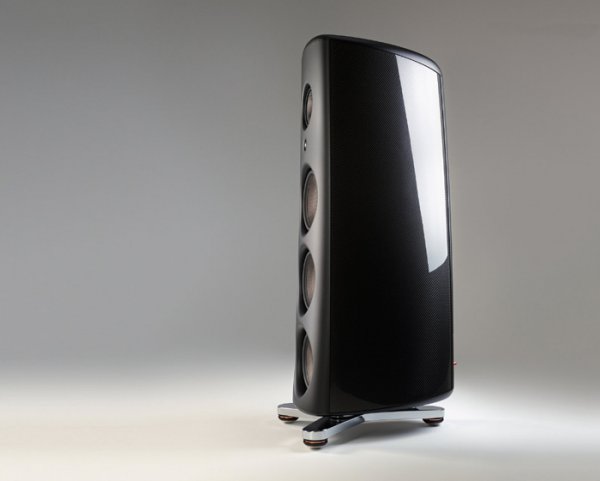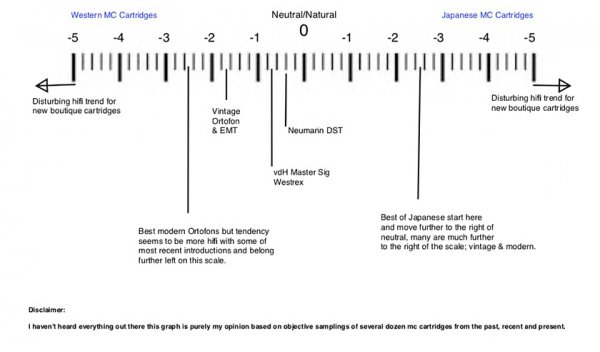One reads many comments about this brand, both positive and negative. Often the opinions are quite strong and infer, to me at least, that people think there is a particular "sound" to the brand. I would like to better understand what people think Magico speakers sound like.
I wrote a long post in another thread describing my thoughts on the "Magico sound" and thought I would start this thread by copying that post here:
Thank you Bob (Rhapsody). I think that is a pretty tough question. I am curious because you have referred to the "Magico sound" a few times in this thread when suggesting that if one likes the "Magico sound", he will like the Magico A5. This suggests that you think there is such a sound and hence my interest in how you and other people might describe it.
It is clear that some people simply don't like Magico speakers, and they too must be referencing a particular "sound" when making such comments.
I have heard many different Magico speakers in many different system contexts and rooms. They have sounded sufficiently different to me, that I find it challenging to identify a brand signature. The degree of dynamics and tonal colorations seem to me to be more dependent on the amplifiers driving them or even the cables than on anything inherent to the brand.
The specific lines do have some traits in common, and this seems mostly based on the construction of that line to meet a certain price point or value proposition, or some idea of "voicing" to please a particular type of customer. Pass Labs seems to have a similar approach with their various amplifier lines, the X and the XA, and then their .5 and .8.
The few attributes I have heard consistently from all of the Magico speakers I've heard, except for the V3, is incredible driver integration, very low cabinet coloration, and timbrally accurate low frequencies. This then leads toward transparency to the upstream components. In that sense, I would describe the brand as chameleon-like: very responsive to system and room context and to set up with very little coloration or character of its own.
For instance, I have heard Magico speakers with the clarity and speed of some panel speakers, the dynamics of some horn speakers, and the coherence of single driver speakers. I have also heard them disappear as some omi-directional speakers do. This is why I find it quite difficult to describe a "Magico Sound."
Finally, the brand does tend to be inefficient and somewhat difficult to drive. This requirement for robust amplification combined with the brick and mortar dealership model might well lead to the favoring of certain types of speaker/amp pairings which may also be very responsible for a type of "house sound" in so much as people generalize about "solid state" and "tube" sound which is then reflected in the listening experience because the speakers are to my ears so transparent to amplification. One is probably less likely to get certain attributes that one associates with SET amplifiers from a Magico system because the speakers can not be driven by such amplifiers.
I admit my experience with a broad range of alternative typologies or even with typical cone/dome drivers and enclosed cabinets is much more limited than to what other audiophiles may have been exposed over time.
Anyway, those are some musings about how I would describe the brand sound, or lack of it."

I wrote a long post in another thread describing my thoughts on the "Magico sound" and thought I would start this thread by copying that post here:
Thank you Bob (Rhapsody). I think that is a pretty tough question. I am curious because you have referred to the "Magico sound" a few times in this thread when suggesting that if one likes the "Magico sound", he will like the Magico A5. This suggests that you think there is such a sound and hence my interest in how you and other people might describe it.
It is clear that some people simply don't like Magico speakers, and they too must be referencing a particular "sound" when making such comments.
I have heard many different Magico speakers in many different system contexts and rooms. They have sounded sufficiently different to me, that I find it challenging to identify a brand signature. The degree of dynamics and tonal colorations seem to me to be more dependent on the amplifiers driving them or even the cables than on anything inherent to the brand.
The specific lines do have some traits in common, and this seems mostly based on the construction of that line to meet a certain price point or value proposition, or some idea of "voicing" to please a particular type of customer. Pass Labs seems to have a similar approach with their various amplifier lines, the X and the XA, and then their .5 and .8.
The few attributes I have heard consistently from all of the Magico speakers I've heard, except for the V3, is incredible driver integration, very low cabinet coloration, and timbrally accurate low frequencies. This then leads toward transparency to the upstream components. In that sense, I would describe the brand as chameleon-like: very responsive to system and room context and to set up with very little coloration or character of its own.
For instance, I have heard Magico speakers with the clarity and speed of some panel speakers, the dynamics of some horn speakers, and the coherence of single driver speakers. I have also heard them disappear as some omi-directional speakers do. This is why I find it quite difficult to describe a "Magico Sound."
Finally, the brand does tend to be inefficient and somewhat difficult to drive. This requirement for robust amplification combined with the brick and mortar dealership model might well lead to the favoring of certain types of speaker/amp pairings which may also be very responsible for a type of "house sound" in so much as people generalize about "solid state" and "tube" sound which is then reflected in the listening experience because the speakers are to my ears so transparent to amplification. One is probably less likely to get certain attributes that one associates with SET amplifiers from a Magico system because the speakers can not be driven by such amplifiers.
I admit my experience with a broad range of alternative typologies or even with typical cone/dome drivers and enclosed cabinets is much more limited than to what other audiophiles may have been exposed over time.
Anyway, those are some musings about how I would describe the brand sound, or lack of it."



